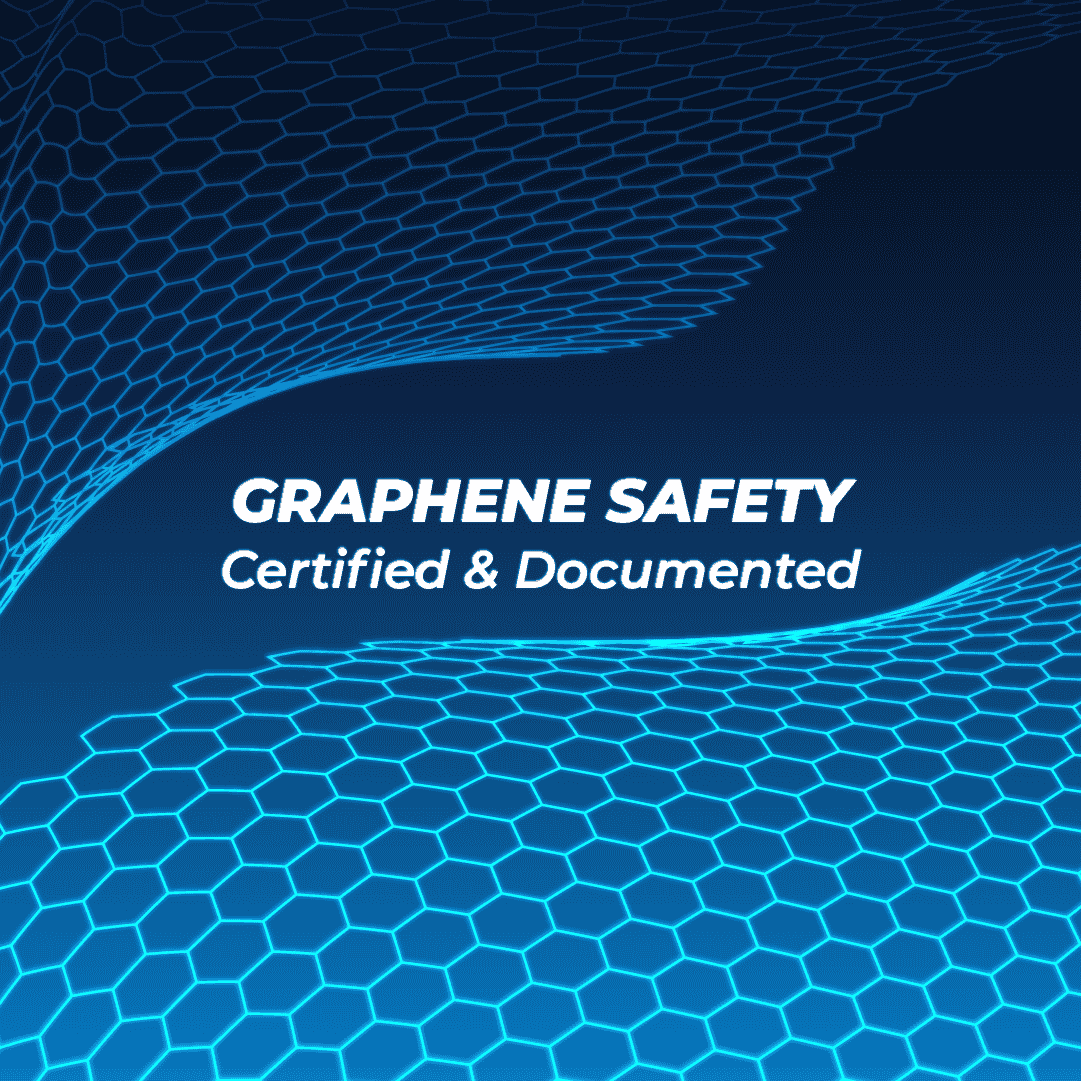
Graphene is a nanomaterial that is made from pure carbon. It is often described as a twodimensional (2D) material because it is only a few carbon atoms thick and therefore is almost entirely surface area.
Graphene can also be considered a “family” of materials because it comes in many forms and types including graphene oxide, reduced graphene oxide, graphene sheets, graphene flakes and other versions of this amazing material.
It is precisely because of the 2D characteristics and dimensions that make graphene one of the strongest and most electrically and thermally conductive materials ever measured. These attributes make it an extremely interesting material to use to make other materials better, lighter, stronger, more durable and more recyclable.
Because it is based on carbon, graphene can be used in an astonishingly wide scope of applications, from extremely sensitive sensors to high performance textiles, to much more efficient batteries, to advanced high strength composites and even to be used in concrete to reduce the amount of embedded CO2. Graphene materials are also being used and tested for use in biological and medical applications from tissue engineering1 to drug delivery systems.2
It is very important to remember that when graphene is used as a nano-additive in other products like plastics, textiles, coatings or even concrete, it is typically used in very small quantities, often much less than just 1% by weight. Despite these small amounts, it contributes significant benefits to the materials it is added to. This also means the graphene is typically fully embedded into the host material it has been added to.
It is also important to note that nearly twenty years ago, the Royal Society published a landmark report3 that made it clear that nanomaterials that were embedded into any material matrix posed no more health and safety threat that any other materials.
Since the Royal Society report, graphene, as a new nanomaterial, has faced inevitable questions that naturally arise over how to safely handle it, and if it poses any risks to human health.
1. Goenka S., Sant V., Sant S. Graphene-based nanomaterials for drug delivery and tissue engineering. J. Control. Release. 2014;173:75–88. doi: 10.1016 j.jconrel.2013.10.017.
2. Zhang Q., Wu Z., Li N., Pu Y., Wang B., Zhang T., Tao J. Advanced review of graphene-based nanomaterials in drug delivery systems: Synthesis, modification, toxicity and application. Mater. Sci. Eng. C. 2017;77:1363–1375. doi: 10.1016 j.msec.2017.03.196.
3. https://royalsociety.org/-/media/Royal_Society_Content/policy publications/2004/9693.pdf
Any risk assessment for graphene, or any other material, has to be based on the formula: Hazard x Exposure = Risk.4 In this formula, you can see that a highly hazardous substance like an acid may have restricted access, limiting its exposure and in so doing reducing its risk. When this formula is applied to the difference between engineered nanoparticles, such as graphene, and those found in the air because of air pollution, we can begin to put the risks into perspective.
In addition, because graphene is both relatively new and there is confusion or misinformation about the health risks of nanomaterials in general, it is important to refer to scientific tests and studies that have thoroughly evaluated the risk profile of graphene materials for dermal (skin) contact.
No nanomaterial in its raw form should be handled directly without the necessary precautions to prevent inhalation (safe handling settings and personal protective equipment for trained personnel). However, as the Royal Society report established nearly twenty years ago, once a nanomaterial (including graphene) has been incorporated into a product, it is virtually impossible to liberate the graphene particles from the host material.
This has been demonstrated conclusively in research commissioned by The Graphene Council and conducted by researchers at Virginia Tech (soon to be published by Nature Springer) that showed once graphene had been embedded into plastic gloves, it was impossible to separate the graphene from the gloves without completing destroying the gloves.
There have been thousands of individual studies and papers written about the many different forms and types of graphene from a toxicological profile perspective. One thing these studies clearly agree upon is that graphene does not pose any significant risk from contact with human skin. (It is made from the same material in your typical pencil).
Please visit https://www.mdpi.com/2073-4352/10/9/718 for references to studies.
Graphene is a material that provides significant benefits by making other materials better; lighter, stronger, more durable, more recyclable and enabling new capabilities that benefit people and the planet.
It is important however to understand if there are any adverse affects from the use of this material that we should be aware of and that we can manage?
Where contact with human skin is concerned, graphene can be used with confidence based on the body of science that has extensively reviewed graphene for more than a decade.
Terrance Barkan, Executive Director, The Graphene Council.
4. https://spectrum.ieee.org/should-we-worry-about-graphene-oxide-in-our-water
Disclaimer: The information provided is the opinion solely of The Graphene Council based on information that we believe is accurate and correct to the best of our abilities at the time of publication and does not constitute health or legal advice to any parties.
http://www.thegraphenecouncil.org/

© 2025 All rights Reserved.